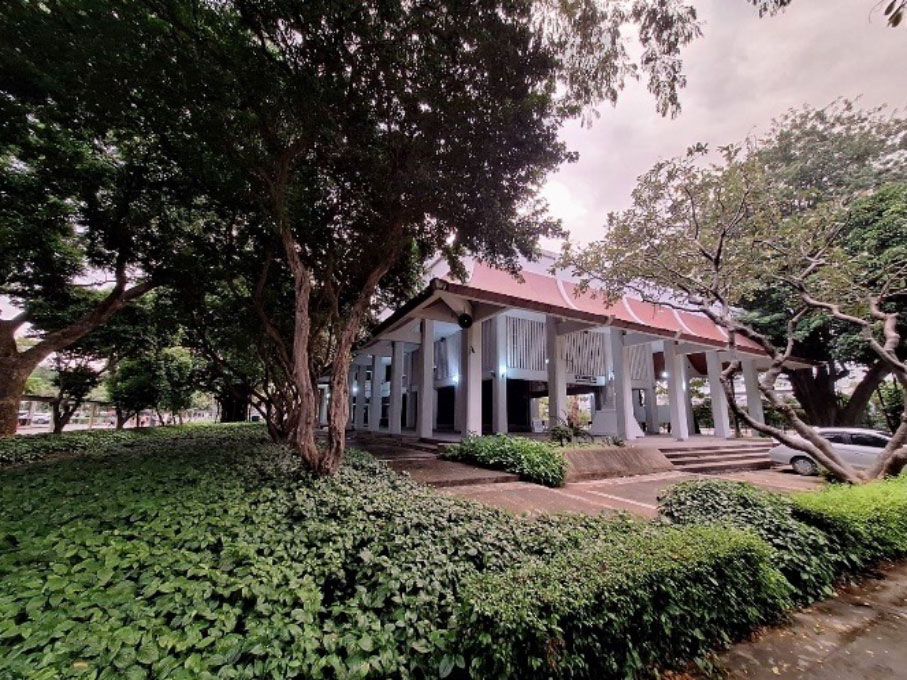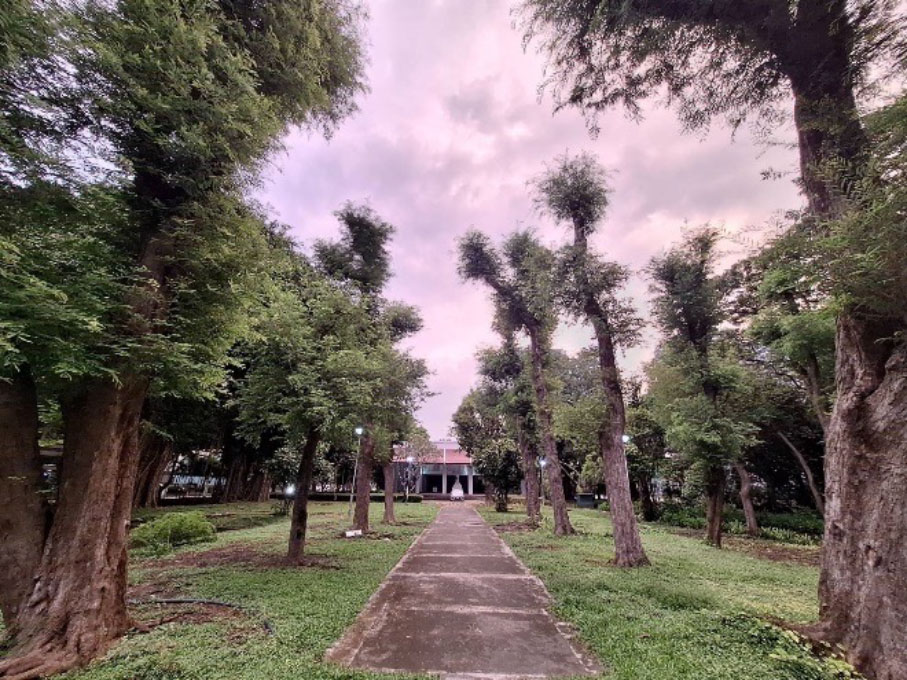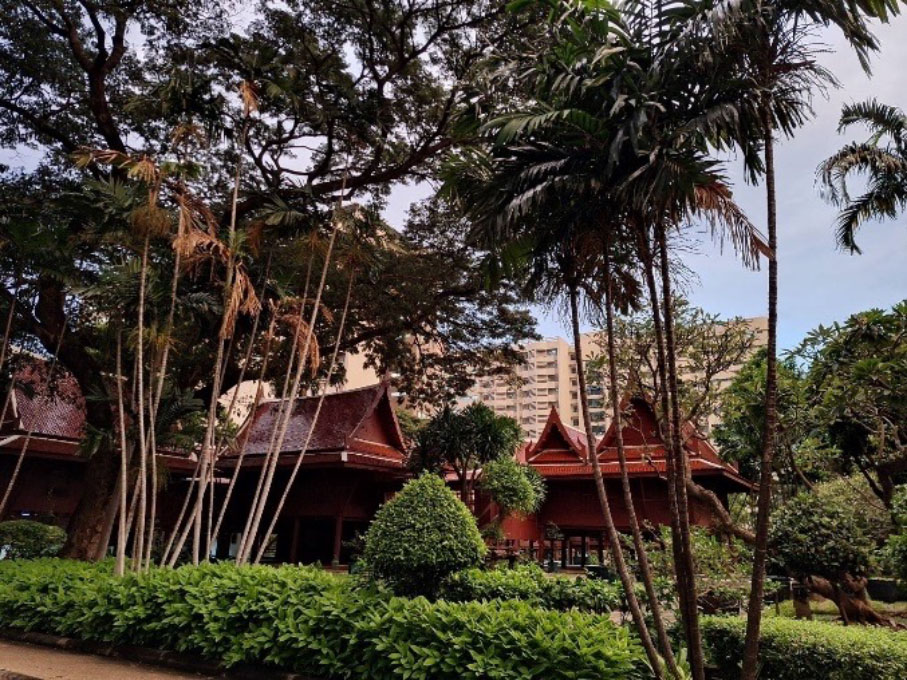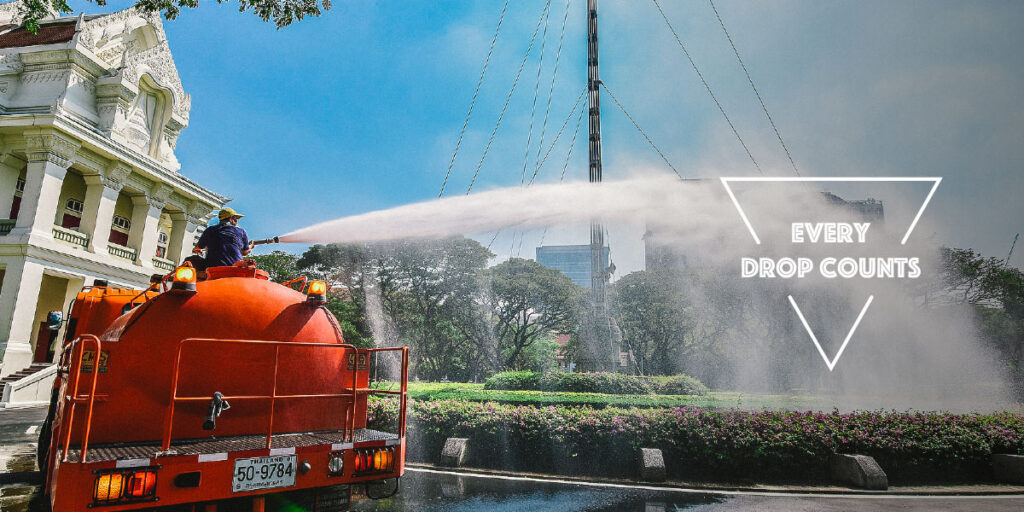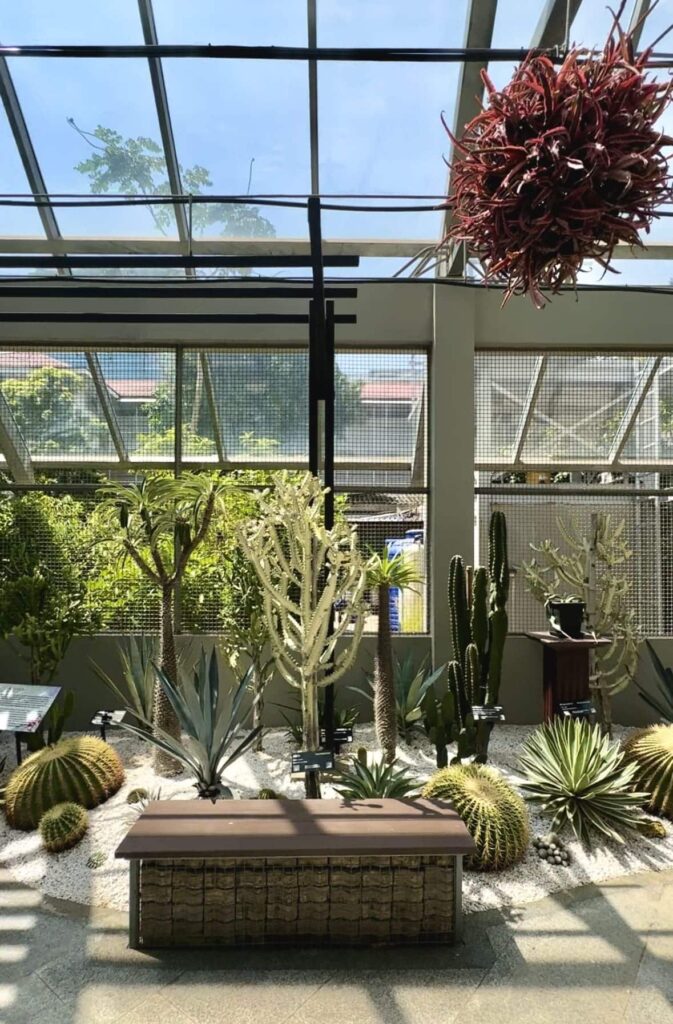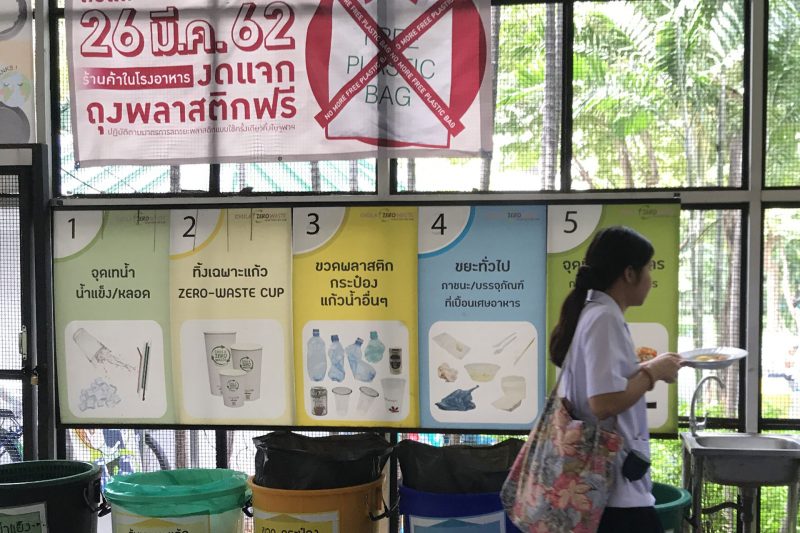Landscape Design at Chulalongkorn University with Native, Drought-Tolerant, and Water-Efficient Plants
To improve the environment, landscaping, and green spaces within Chulalongkorn University with an emphasis on sustainability and environmental conservation, the university recognizes the importance of selecting suitable native plant species. These plants are introduced to complement existing vegetation or newly developed landscape areas. Native plants are chosen and interspersed with other species as they are highly adaptable to Thailand’s relatively dry climate, making them a wise choice. These drought-tolerant plants require minimal irrigation, helping reduce the university’s water consumption for landscaping. Additionally, native species are low-maintenance and effectively support local ecosystems and biodiversity, contributing to ecological balance and sustainability.
The landscape surrounding the Chulalongkorn University Dharma Center Building features tamarind and burma padauk trees at the front, with banyan trees planted at the rear.
[ https://www.cuartculture.chula.ac.th/about/departments/chula-dharma-center/ ]
The Reun Thai (Chula Thai House), Chulalongkorn University includes native betel palm trees interspersed with other species around its sides and back areas.
[ https://www.cuartculture.chula.ac.th/en/services/reun-thai/ ]
Additionally, the university requires the landscape management team to utilize treated wastewater for irrigating plants on campus to conserve water resources. [ http://www.green.chula.ac.th/index.php/water/water-recycling-project/ ] For example, the Office of Property Management, Chulalongkorn University collects wastewater from residents of CU Terrace and CU i House, treats it, and reuses it to water plants in Chulalongkorn Centennial Park. This initiative saves up to 55 million liters of fresh water annually. [ https://pmcu.co.th/samyan-smart-city/ ]
Currently, the Department of Botany at the Faculty of Science, Chulalongkorn University, operates a permanent exhibition called the Living Plant Museum, housed in a glasshouse. This museum serves not only as a collection site for significant botanical species but also as a knowledge-sharing platform where faculty, plant experts, and local communities connect to exchange insights and deepen their understanding of nature. This network encourages knowledge transfer to the younger generation, cultivating environmentally conscious citizens and providing lifelong learning resources to address climate change.
The Living Plant Museum also functions as an educational center for Chulalongkorn students and a research facility for studying plants in a controlled environment with an evaporative cooling system. The exhibition features over 200 plant species from both domestic and international sources within a 464-square-meter glasshouse. Six themes are displayed: tropical rainforest diversity, drought-tolerant plants, aquatic plants, pteridophyte groups, gymnosperms, and the evolution of flowering plants. We aim for the museum to foster innovation and knowledge to address environmental, economic, and social challenges. [ https://www.chula.ac.th/en/news/144729/ ]
BY
- Office of Property Management, Chulalongkorn University
- Office of Physical Resources Management, Chulalongkorn University
- Faculty of Science, Chulalongkorn University
Others

